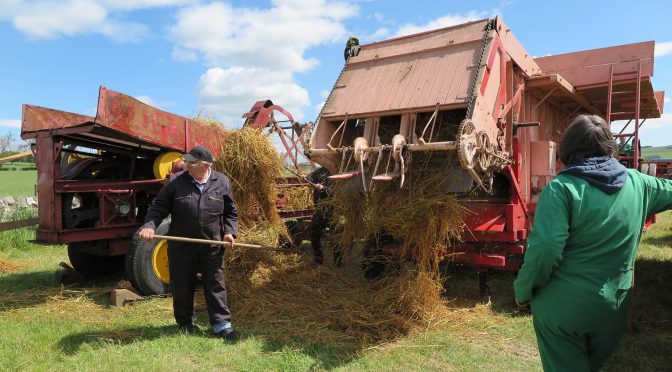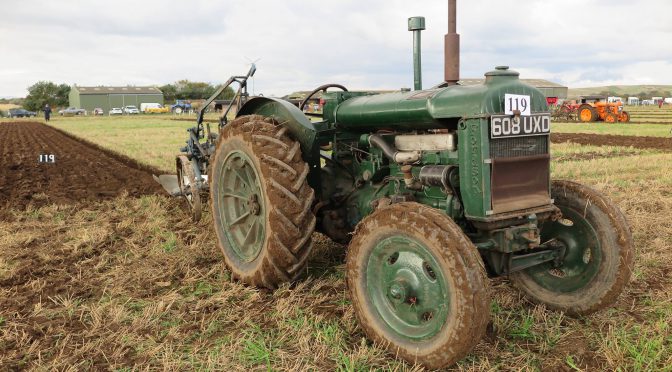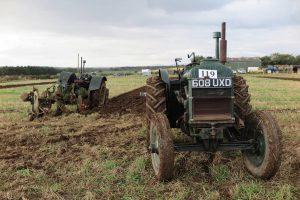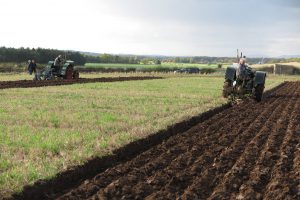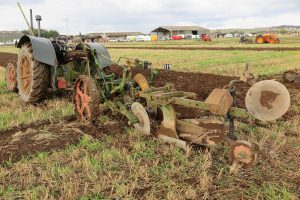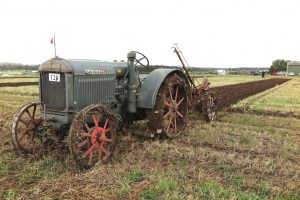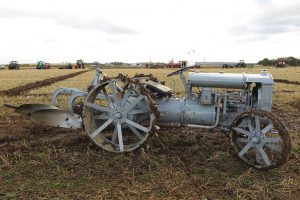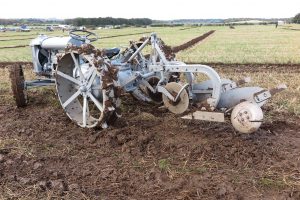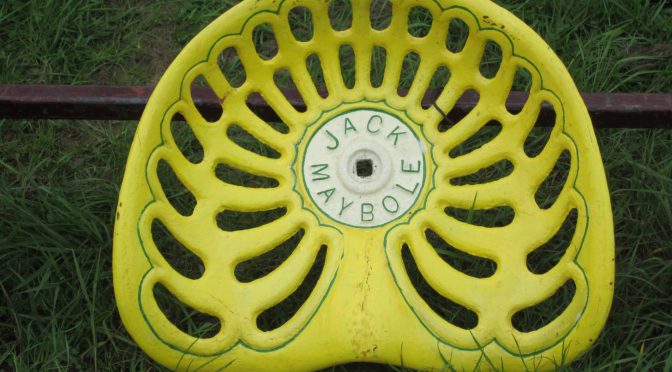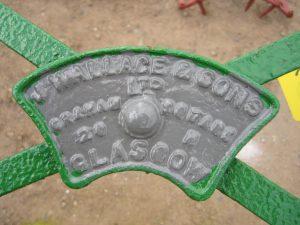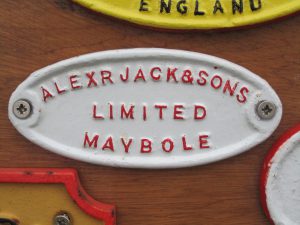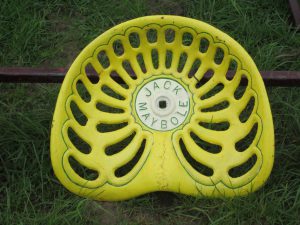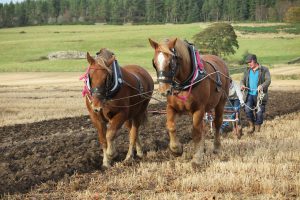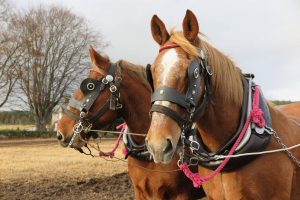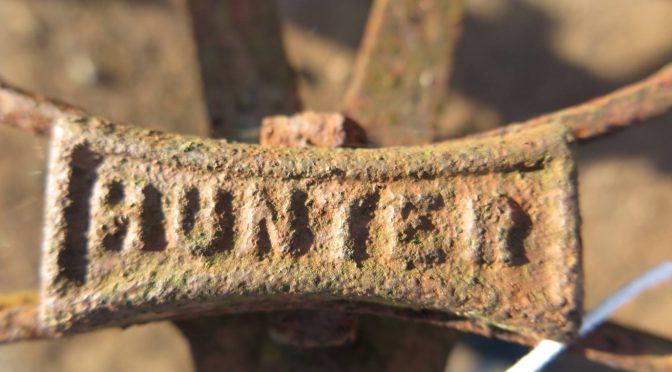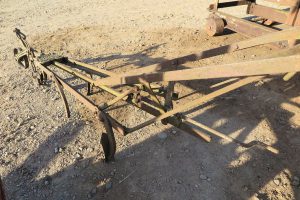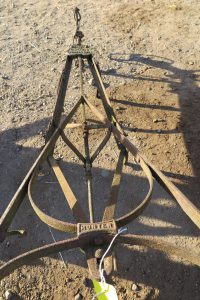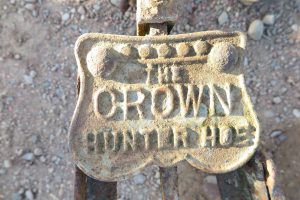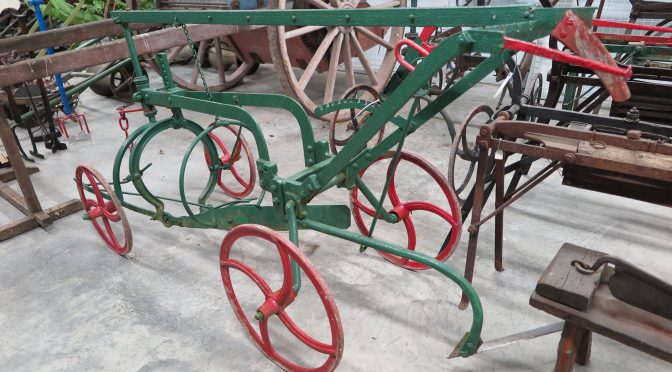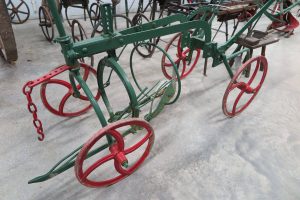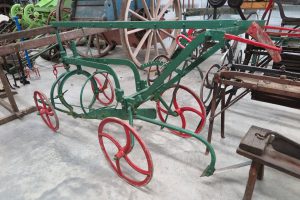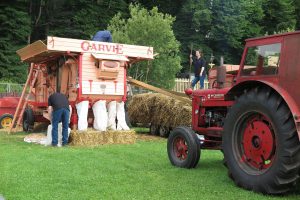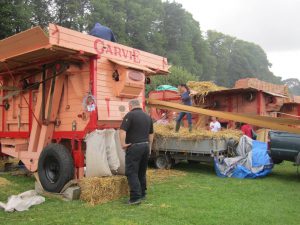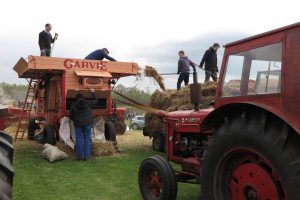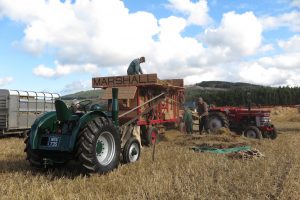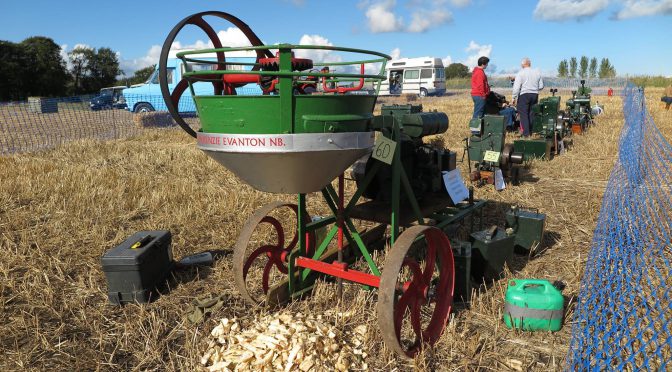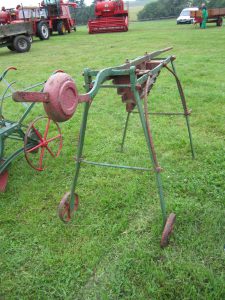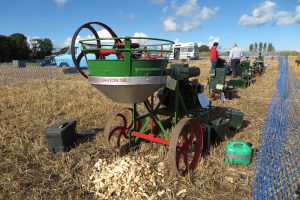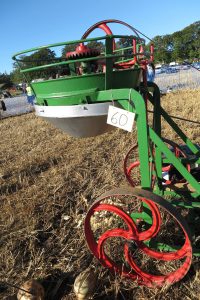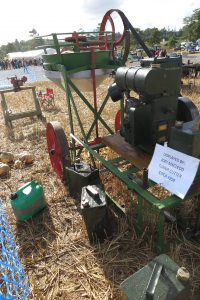If you were a farmer or agriculturist in Scotland in 1898 you could have purchased your implements and machines from a number of eminent machine makers in Scotland, England, and further afield.
In Scotland, a number of makers had national and international standing. They included:
J. D. Allan & Sons, Culthill Implement Works, Dunked. According to the Scottish farmer, the company “enjoy an excellent reputation for the superior quality of their agricultural implements”. They included potato diggers, carts, and hoes.
 J. Bisset & Sons Ltd, Bisset. Blairgowrie, was “one of the best known firms of agricultural engineers in all of Great Britain”. It was the only Scottish firm to make its own binder, which had the reputation of being “one of the best machines offered for general harvesting work”. The Scottish Farmer could comment “it is unnecessary at this time to say that the material and workmanship put forth by the Blairgowrie form takes rank as amongst the best in the country.”
J. Bisset & Sons Ltd, Bisset. Blairgowrie, was “one of the best known firms of agricultural engineers in all of Great Britain”. It was the only Scottish firm to make its own binder, which had the reputation of being “one of the best machines offered for general harvesting work”. The Scottish Farmer could comment “it is unnecessary at this time to say that the material and workmanship put forth by the Blairgowrie form takes rank as amongst the best in the country.”
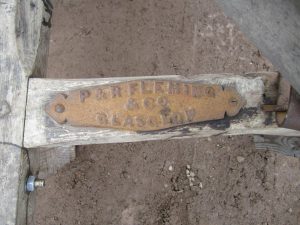 P. & R. Fleming, Graham Square, Glasgow, had been established for nearly 100 years. The company was “pushing their agricultural side with great energy,a nd achieving much success throughout the country”. Apart from its own manufactures, it was an agent for Walter A. Wood (binders), Barford & Perkins (hay tenders), Ransomes (hay ricks and cultivators).
P. & R. Fleming, Graham Square, Glasgow, had been established for nearly 100 years. The company was “pushing their agricultural side with great energy,a nd achieving much success throughout the country”. Apart from its own manufactures, it was an agent for Walter A. Wood (binders), Barford & Perkins (hay tenders), Ransomes (hay ricks and cultivators).
John Gray, Stranraer, had a world-wide reputation for its dairy utensils. Mr Gray was said to be the first in the country to “devote special attention to the requirements of modern scientific dairying”. The company made and sold everything from the dairy including cheese vats, curd racks, mills, knives, chests, these presses, churns and butter workers.
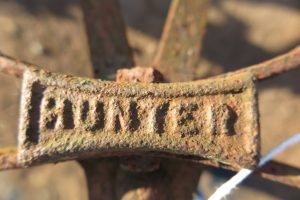 Thomas Hunter & Sons, Maybole, had a “long-established reputation” and for many years had occupied “a foremost place amongst the agricultural firms of Great Britain”. It was celebrated for the “Hunter” hoe as well as its potato ridging plough, the “Dunlop” triple drill plough and “Braehead” patent manure distributor.
Thomas Hunter & Sons, Maybole, had a “long-established reputation” and for many years had occupied “a foremost place amongst the agricultural firms of Great Britain”. It was celebrated for the “Hunter” hoe as well as its potato ridging plough, the “Dunlop” triple drill plough and “Braehead” patent manure distributor.
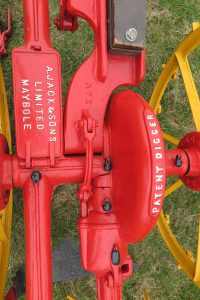 Jack & Sons, Maybole, had “acquired a world-wide reputation for special manufactures in agricultural engineering”. It was renowned for its potato diggers and other manufactures including reapers and mowers, horse rakes, hay rick-lifters, turnip sowers, grain and grass seed sowers, and food coolers. Its chain-delivery manure distributor was claimed to be”the best and most reliable of its kind in the market”.
Jack & Sons, Maybole, had “acquired a world-wide reputation for special manufactures in agricultural engineering”. It was renowned for its potato diggers and other manufactures including reapers and mowers, horse rakes, hay rick-lifters, turnip sowers, grain and grass seed sowers, and food coolers. Its chain-delivery manure distributor was claimed to be”the best and most reliable of its kind in the market”.
Kemp & Nicholson, Stirling, was “well-known” specialising in horse-rakes, mowers, hay collectors, hay rick-liftes and carts as well as “implements of various descriptions”.
A. & J. Main & Co. Ltd, Glasgow and Edinburgh, was a significant maker and dealer of implements and machines and galvanised iron roofing, iron fencing and wire netting. It was agent for the new “Deering” binder which had received a large number of awards throughout the world.
 A. Newlands & Son, Linlithgow, was a renowned maker of ploughs, having “had hardly a rival in this country”. Apart from ploughs, it also made horse rakes, drill grubbers, diamond harrows, hay collectors and cultivators.
A. Newlands & Son, Linlithgow, was a renowned maker of ploughs, having “had hardly a rival in this country”. Apart from ploughs, it also made horse rakes, drill grubbers, diamond harrows, hay collectors and cultivators.
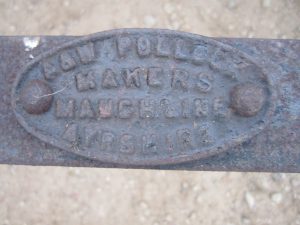 Andrew Pollock, Mauchline, specialised in a range of harvesting implements and machines, including combined reapers and mowers, hay collectors, and rick lifters. It was an agent for Nicholson’s rakes and everything for the harvest field.
Andrew Pollock, Mauchline, specialised in a range of harvesting implements and machines, including combined reapers and mowers, hay collectors, and rick lifters. It was an agent for Nicholson’s rakes and everything for the harvest field.
Ben Reid & Co., Bon Accord Works, Aberdeen, was especially renowned for its threshing machines which were made for the largest formats the smallest croft. It also made its “Bon Accord” back delivery reapers and mowers and artificial manure distributors “for which the firm have a reputation hiccup is world-wide”.
John Scoular, Stirling, was a renowned maker of horse hoes, rakes, cultivators, harrows, sheep racks, rollers and food coolers.
George Sellar & Sons, Huntly was “the famous makers of ploughs for all purposes, steel grubbers, harrows, broadcasts, and turnip sowers”. It manufactures had a “superior excellence”. The company had “been established so very long” that its name was “a household word”.
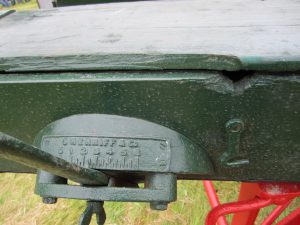 Thomas Sherriff & Co., West Barns, Dunbar, was another old-established firm, specialising in corn drills, bean drills, turnip and mangold drills, and broadcast machines. They also made a folding sheep fodder rack which was widely used in east Lothian.
Thomas Sherriff & Co., West Barns, Dunbar, was another old-established firm, specialising in corn drills, bean drills, turnip and mangold drills, and broadcast machines. They also made a folding sheep fodder rack which was widely used in east Lothian.
William Sinton, Jedburgh, was a famous manufacturer of churns of all kinds including end-over-end, round barrel andoval-barrel ones.
 John Wallace & Sons Ltd, Glasgow, the “well-known” firm which sold “a large and varied collection of machines and implements”, sold machines of Scottish, British and American manufacture. It had its own celebrated mowers and reapers, as well as selling “Massey-Harris” self-binders. It also made and sold horse rakes, hay collectors, hay tenders, rick lifters, and horse forks.
John Wallace & Sons Ltd, Glasgow, the “well-known” firm which sold “a large and varied collection of machines and implements”, sold machines of Scottish, British and American manufacture. It had its own celebrated mowers and reapers, as well as selling “Massey-Harris” self-binders. It also made and sold horse rakes, hay collectors, hay tenders, rick lifters, and horse forks.
Robert Wallace & Son, Whitletts, Ayr, was described by the Scottish farmer as “amongst the most ingenious modern agricultural engineers”. Its manufactures included a combined drill and broadcast manure distributor, double drill ploughs and carrot sowers.
When you are round a rally field next season, have a look to see if there are any implements and machines by noted makers who already had significant reputations by the late nineteenth century. There are still a few of there manufactures to be seen!
The photographs of name plates were taken at rallies around Scotland.
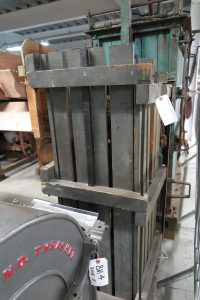 means were developed to compress hay into bales to make it easier to transport. Hay baling presses started to emerge and be more widely iused in the 1890s. By 1908 Henry Stephens’ The Book of the Farm could state about them:
means were developed to compress hay into bales to make it easier to transport. Hay baling presses started to emerge and be more widely iused in the 1890s. By 1908 Henry Stephens’ The Book of the Farm could state about them: the country, and in this way several efficient appliances for the purpose have been brought into notice. Large presses for steam-power have been introduced, but smaller presses for horse- or hand-power are more widely used.”
the country, and in this way several efficient appliances for the purpose have been brought into notice. Large presses for steam-power have been introduced, but smaller presses for horse- or hand-power are more widely used.”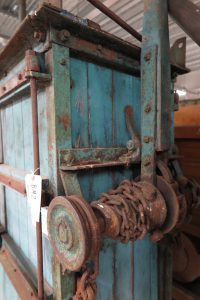 baler, as well as their own double action leverage hay and straw baler and hay and straw balers, for power. Robert G. Garvie, Aberdeen, manufactured a hay and straw double acting baling press, angle steel framing for £12. Wm Dickie & Sons, East Kilbride, made two models: a new patent hay and straw baler, for horse, belt or hand power (sold for £16), and a hand power double leverage hay or straw baler, with transport wheels and horse trams (sold for £13 10s).
baler, as well as their own double action leverage hay and straw baler and hay and straw balers, for power. Robert G. Garvie, Aberdeen, manufactured a hay and straw double acting baling press, angle steel framing for £12. Wm Dickie & Sons, East Kilbride, made two models: a new patent hay and straw baler, for horse, belt or hand power (sold for £16), and a hand power double leverage hay or straw baler, with transport wheels and horse trams (sold for £13 10s).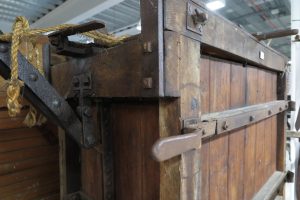 These presses make an interesting contrast with the stationary balers of later year that we now associate with threshing displays and with the mobile balers in later years. You won’t see many of them around the Scottish rally fields.
These presses make an interesting contrast with the stationary balers of later year that we now associate with threshing displays and with the mobile balers in later years. You won’t see many of them around the Scottish rally fields.